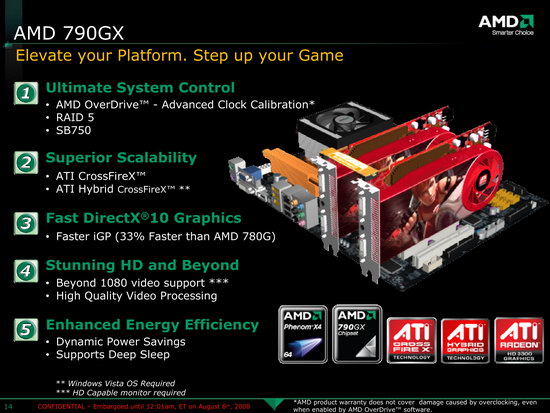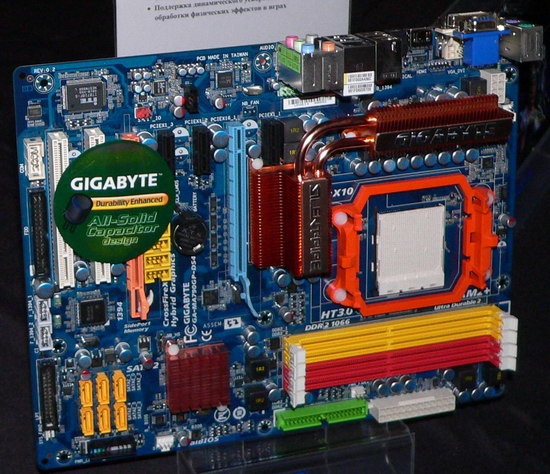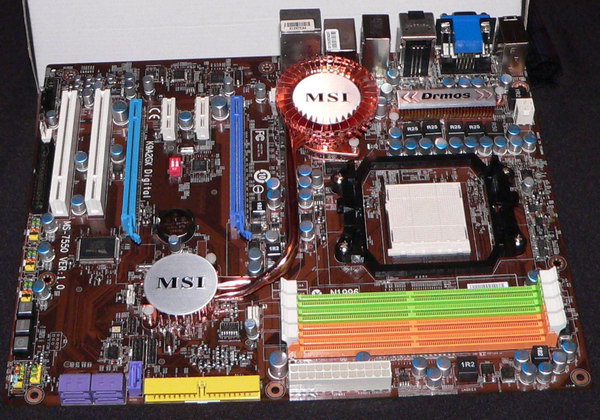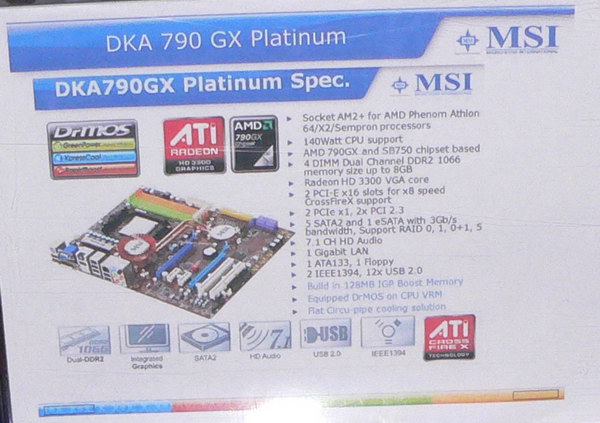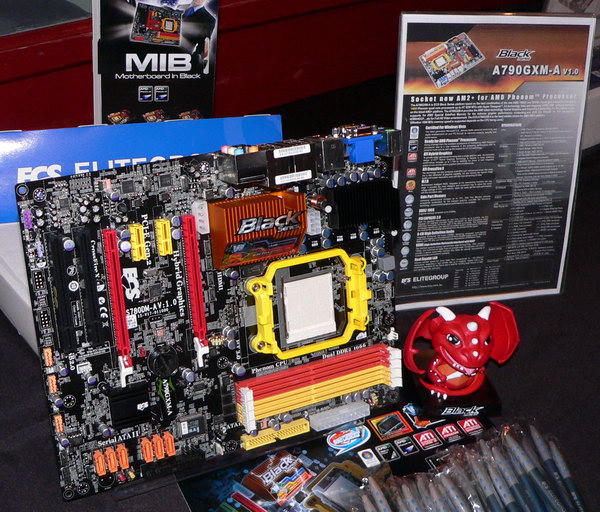Curiously enough, AMD was the first to use the idea of toggling graphics acceleration in notebooks, in the previous generation of chipsets (RS690M). Their solution switches to the integrated core automatically (when notebook works on batteries). However, the company unexpectedly decided not to use hybrid functionality for desktop chipsets. In return, AMD is perfecting PowerPlay, which allows to disable idle units in GPUs, both mobile and desktop modifications, including graphics cores integrated into chipsets. Of course, it's a fully automatic function, controlled by BIOS and drivers. On the contrary, NVIDIA cards do not support this function, so it's hard to say which approach will demonstrate better results in practice. It's up to power consumption measurements.

The integrated graphics core has 40 unified shader processors, 4 texture units, and 4 ROPs, that is just as many as in 780G. But its nominal frequency is higher by 200 MHz. The number of PCI Express 2.0 lanes is the same -- 26. Considering that Southbridge takes up four lanes, the graphics port can support only one graphics card in x16 mode. But it's officially possible to install two graphics ports and add CrossFire support. In this case the ports are automatically reconfigured to the x8+x8 mode.

For this very reason the chipset belongs to the same group as 790X. And 790FX remains a specialized chipset for those, who want to squeeze maximum performance from 2 x Radeon HD 4870 X2 in CrossFire mode, thus requiring two x16 ports. This time we won't play skeptic and say that 8 lanes are sufficient in all cases, because they are PCI Express 2.0 lanes, and so they perform like 16 lanes of the first version. However, it may be not enough for the above mentioned couple. At least we have all reasons to test it in practice, when we have such graphics cards in our lab. With the launch of Radeon HD 4800, CrossFire usage is not limited to ultimatistic configurations. For example, a CrossFire configuration with two Radeon HD 4850 cards looks very interesting in terms of absolute performance and even price/performance ratio (it rarely happens with dual-card configurations). So 790GX-based motherboards may become the ideal choice for such systems.

Modern games require a powerful CPU, of course. But our tests (with GPUs from AMD and NVIDIA) show that most of the gaming PC budget should be spent on a graphics card. In this case, if we speak of the mass segment, it leaves us about $200 for a CPU. Even the top 6400+ model in Athlon 64 X2 series is cheaper, and most Phenoms also fit within this budget. Will this CPU suffice to let a graphics card determine overall performance in real conditions (resolutions of a good monitor, high graphics quality), that is will this CPU stop being the bottleneck?
Strictly speaking, it's a rhetorical question, because a processor for $150 is more than enough except for several games. However, AMD does not deny that a more expensive processor, including Intel products, will provide performance gains. But will this gain be really noticeable in games? At least our test results demonstrate that additional performance gains appear only when the frame rate is very high (for example, a user gets 90 fps instead of 70 fps, while games become perfectly smooth at 50-60 fps). If the frame rate is about 30 fps with a CPU for $200, even a 500-dollar processor won't save the day, you must upgrade your graphics card.
So does it make sense to overpay for a processor? Perhaps you should spend your money on something else. That's a practical approach. Unlike Intel, AMD has "something else" to offer besides CPUs. So the company addresses serious-minded users.
In conclusion, let's have a look at the first motherboards on this chipset and their specs.
Gigabyte already launched very interesting motherboards on AMD 780G (full-sized products with optional CrossFire support and compact models with a video buffer). And judging by the MA790GP-DS4H specs, the company is getting ready to nail down a success with the appearance of AMD 790GX.
MSI product also looks functionally rich. Besides, it supports trendy power saving technologies, including smart control of the CPU voltage regulator.
New Black Series products from ECS also look convincing -- video buffers, support for processors with TDP up to 140 W, two graphics ports -- such motherboards will go well with Black Edition processors, which feature unlocked multiplier for overclocking. That's what ECS marketing guys hinted at in the name of the series, even though older motherboards from this series were not designed for overclockers.
ASUS, Foxconn, and Biostar have presented just as interesting motherboards simultaneously with the chipset announcement. By the way, we'll be publishing the review of the ECS product shortly.
Write a comment below. No registration needed!




